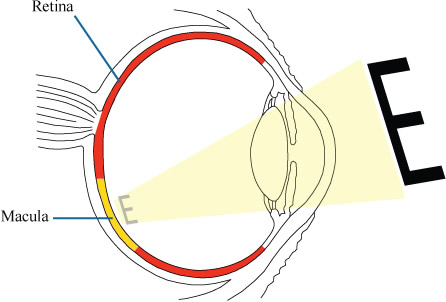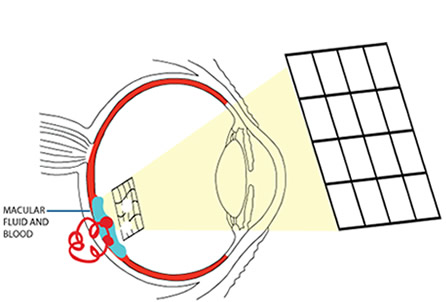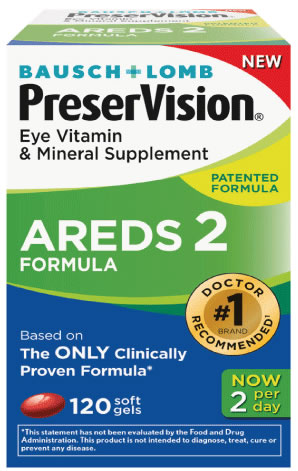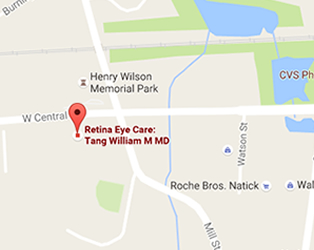Age-Related Macular Degeneration
Overview
Age-related macular degeneration (AMD) is strongly driven by a person’s age and genetic background. The majority of patients with AMD has the dry form, which tends to be associated with relatively good vision. The dry form can turn into the wet form in 20% of cases. The wet form means that there is internal fluid seepage or bleeding in the macula. The wet form is usually treated by eye injections. It is important to know that AMD primarily affects the central vision (reading, watching TV, seeing faces). The peripheral vision is usually intact even in severe cases, and this can allow many patients to enjoy many activities of daily living and often live healthy, independent lives.
AMD Usually affects the central vision, making it difficult to see faces
Patients often want to know what can they do to make things better. Seeing your eye doctor or a retina specialist regularly is very important in preventing vision loss, since the early stages are often not very symptomatic. Use the Amsler Grid daily to monitor your vision, checking one eye at a time. If you have high risk dry AMD, your doctor may prescribe an in-home monitoring device. Macular health is also strongly related to cardiovascular health. So what is good for the heart is usually also good for the macula as well. A diet with green leafy vegetables and fatty fish is usually recommended. The AREDS2 (Age-Related Eye Disease Study 2) eye vitamins can help reduce the chances of vision loss from wet AMD.
When dry macular degeneration becomes more severe, letters can look more faded. You may need more light to be able to see the same objects as you used to.
Risk Factors
AMD has many “causes”. It is a multi-factorial condition with many risk factors. The main risk factor is age. The older you are, the higher the risk. If you have a family history of AMD, you are at higher risk.
The common risk factors are:
- Age
- Family History
- Women
- Caucasian Race
- Cigarette Smoking
- High Blood Pressure
- Obesity
- Excessive sun exposure
- Diet deficient in fruits and vegetables
Amsler Grid
Using the Amsler Grid is simple to do and it can help you detect the early sign of a new problem. You should do this every day. It usually only takes a few seconds to do. When you look at something with both eyes, the brain tries to combine the two images together and therefore may overlook the deterioration of vision from one eye. So it is important to cover one eye at a time. You can put your Amsler Grid on the doors of your refrigerator to help you remember to check this once a day. If you have already been living with some visual distortion, it is important to remember how those visual distortion look like, so that if there is any change or worsening, you are able to detect this right away. You should know that the Amsler Grid may not be sufficient to detect early AMD because patients with early AMD may see no abnormality on the Amsler Grid.
What Can You Do At Home
AREDS2 Eye Vitamins
If you have AMD, taking AREDS2 vitamins was found to reduce the risk for advanced AMD by 25% over a 5-year period. Advanced AMD can lead to significant vision loss. However, the AREDS2 formulation is not for everyone. AREDS vitamins were not found to benefit patients with no AMD or early AMD. The age of patients enrolled in the AREDS study was between 55 to 80. The AREDS2 vitamins contain the following ingredients:
| Nutrient | Amount (per day) |
| Vitamin C | 500 mg |
| Vitamin E | 400 IU |
| Zinc | 80 mg |
| Copper | 2 mg |
| Lutein | 10 mg |
| Zeaxanthin | 2 mg |
Some patients, for a variety of reasons, take an eye vitamin that is a variation of this formula. Some patients take just one ingredient in the formula. It is not clear whether that would provide the same protection or not.
Treatments for Wet AMD
When someone develops wet AMD, the best and most effective therapy is usually eye injections. The eye injection usually has to be repeated every month. In some patients, after a series of injections, the interval between injections can be extended longer and the macula stays dry. In many patients, the macula turns wet again if the interval between injections is too long. The vision usually gets worse when the macula is wet, so it is best to keep the macula as dry as possible.
These injections of medicine (commonly AVASTIN, LUCENTIS, EYLEA, also called anti-vascular endothelial growth factor) helps reduce the vascular seepage and stop internal bleeding in the macula. They can help improve vision or stop the vision from getting worse.
The eye is anesthetized so that the injection is usually very tolerable. There is usually some soreness later in the day, but most patients recover quickly after a day or two. The eye may look bloodshot from the injection.
Depending on the situation and the particular type of complication, sometimes other treatments are needed, such as laser surgery or photodynamic therapy or even eye surgery.






